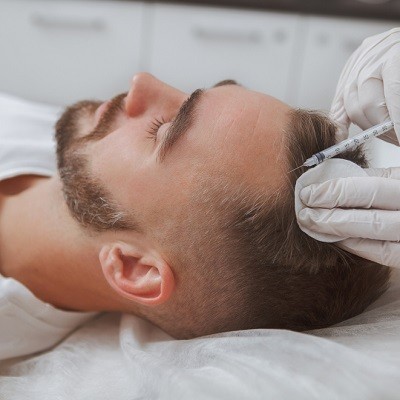Platelet-Rich Plasma (PRP) therapy has gained significant popularity in the fields of dermatology, orthopedics, and regenerative medicine. It is widely used for treating hair loss, skin rejuvenation, joint pain, and muscle injuries. However, many people wonder about the safety and regulatory status of PRP in Islamabad, particularly whether it is FDA-approved. In this blog, we will explore the safety of PRP therapy, its approval status, and what patients should consider before undergoing treatment.
What is PRP Therapy?
PRP therapy is a medical treatment that involves using a patient’s own blood to promote healing and regeneration. The process involves the following steps:
- Blood Collection – A small amount of blood is drawn from the patient, similar to a routine blood test.
- Centrifugation – The blood is placed in a centrifuge to separate platelet-rich plasma from other components.
- PRP Extraction – The concentrated PRP is carefully extracted for use.
- Injection – The PRP is injected into the targeted area, such as the scalp for hair loss, the skin for rejuvenation, or joints for pain relief.
The high concentration of growth factors in PRP stimulates healing, increases collagen production, and promotes tissue regeneration.
Is PRP Therapy Safe?
PRP is generally considered safe for most patients. Since it is derived from the patient’s own blood, the risk of allergic reactions or infections is minimal. However, as with any medical procedure, certain risks and considerations should be kept in mind.
1. Minimal Risk of Allergic Reactions
PRP uses the patient’s own biological material, reducing the likelihood of an immune reaction. Unlike synthetic drugs or fillers, PRP does not introduce foreign substances into the body.
2. Low Risk of Infection
When performed in a sterile medical setting, PRP therapy has a very low risk of infection. The key is ensuring that the procedure is conducted by a qualified medical professional using proper sterilization techniques.
3. Mild and Temporary Side Effects
Some patients may experience mild side effects, including:
- Redness, swelling, or bruising at the injection site.
- Temporary discomfort or sensitivity in the treated area.
- Mild headache (in cases of scalp PRP therapy).
These side effects typically resolve within a few days.
4. Considerations for Certain Medical Conditions
While PRP is safe for most people, those with certain conditions should consult a doctor before undergoing treatment. PRP may not be suitable for individuals with:
- Blood disorders or clotting issues.
- Active infections or chronic illnesses.
- Cancer or undergoing chemotherapy.
Is PRP FDA Approved?
1. FDA Stance on PRP Therapy
The U.S. Food and Drug Administration (FDA) has not specifically approved PRP as a treatment for any particular medical condition. However, this does not mean that PRP is unsafe or illegal. PRP therapy falls under the category of “minimally manipulated autologous blood products,” meaning that it is not classified as a drug or medical device requiring full FDA approval.
2. FDA-Approved Devices for PRP Preparation
While PRP itself is not FDA-approved, many of the devices used to prepare PRP are FDA-cleared. This means the FDA has reviewed the safety and effectiveness of these centrifugation systems for producing PRP.
Some FDA-cleared PRP preparation systems include:
- Harvest SmartPrep®
- Arthrex Angel®
- EmCyte Pure PRP®
Clinics using FDA-cleared PRP systems adhere to regulatory guidelines, ensuring a safe and standardized preparation process.
3. Off-Label Use of PRP
Since PRP is not officially FDA-approved for specific treatments, its use is considered “off-label.” This means doctors can legally use PRP at their discretion based on scientific research and clinical experience. Many well-established medical studies support PRP’s effectiveness for hair loss, skin rejuvenation, and orthopedic conditions.
Why is PRP Not FDA Approved?
The FDA primarily regulates drugs and medical devices, but PRP is an autologous (self-derived) treatment. Since PRP is extracted from a patient’s own blood and not chemically altered, it does not fall under traditional drug regulations.
Additionally, obtaining full FDA approval requires large-scale clinical trials, which are expensive and time-consuming. Since PRP has been used safely for decades with minimal side effects, most practitioners and researchers focus on refining treatment protocols rather than seeking FDA approval.
How to Ensure a Safe PRP Treatment?
If you’re considering PRP therapy, follow these steps to ensure a safe and effective experience:
1. Choose a Qualified Provider
PRP should only be performed by licensed medical professionals, such as dermatologists, orthopedic specialists, or trained cosmetic practitioners. Avoid unregulated beauty salons or non-medical clinics offering PRP at suspiciously low prices.
2. Check for FDA-Cleared PRP Systems
Ask your provider about the PRP preparation system they use. FDA-cleared devices ensure a standardized and safe concentration of platelets.
3. Verify Clinic Hygiene and Sterility
Since PRP involves injections, the procedure must be conducted in a sterile environment to minimize infection risks.
4. Discuss Your Medical History
Inform your doctor about any medical conditions, medications, or past reactions to injections. This helps determine whether PRP is a suitable option for you.
5. Follow Pre- and Post-Treatment Instructions
Your provider will give you specific guidelines to follow before and after PRP treatment. These may include avoiding blood thinners, staying hydrated, and limiting sun exposure.
Conclusion
PRP therapy is a safe and widely used treatment for hair loss, skin rejuvenation, and orthopedic conditions. While PRP itself is not FDA-approved, the devices used for its preparation are FDA-cleared, ensuring quality and safety. Because PRP is derived from a patient’s own blood, it carries minimal risk and is considered a natural alternative to invasive procedures.
For the best results, always choose a reputable clinic, verify the PRP system used, and consult with a qualified doctor before undergoing treatment. If performed correctly, PRP can offer impressive benefits with minimal downtime and side effects.



